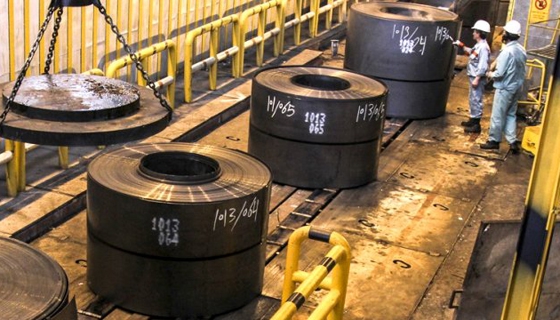A fast-developing country, marked by a fast-growing population – 80 million and rising – and a high level of urbanization, with 70% living in cities, the country has the potential to become one of the biggest construction markets in the Middle East. Construction Annual demographic growth in Iran is estimated at 1.30% while housing demand in the country is around 1.50 million new units per year. But at present, only around 700,000 units per year are being completed due to a lack of financing, which is causing a significant housing shortage. In the last Iranian year – which ran from March 21, 2015, to March 20, 2016 – the country’s approved construction budget was $13.40 billion. But in reality, less than half of that was realized, which resulted in nearly 3,000 projects being abandoned, and a significant drop in domestic demand for construction materials, including steel products, according to Iran’s English-language economic daily, the Financial Tribune.
Projects under way in Iran in the construction, automotive and railway infrastructure sectors should provide a substantial boost to demand for steel in the Middle Eastern country.
Statistics indicate the private sector’s leading role in the steel industry’s overall growth while state-owned companies lag behind.
Iranian private steelmakers produced more than 1.9 million tons of crude steel during the first half of the current Iranian year (started March 20), registering a 37% jump compared with last year’s corresponding period, according to Iranian Steel Producers Association.
The private sector also produced over 3.1 million tons of steel products during the six-month period to register a 3% increase. The output for all their products recorded an upward trend, with the exception of cold-rolled coil, which dropped 11% to 226,000 tons.
Hot-rolled coil production grew 38% to stand at 281,000 tons, coated coil output rose by 20% to 231,000 tons, beam production increased 4% to 114,000 tons and rebar output inched up slightly to stand at 2.1 million tons.
Heavyweights of Iran's steel industry, including public and semi-public companies such as Mobarakeh, Khouzestan, Khorasan and Esfahan steel companies as well as Iran National Steel Industry Group, saw a 1% growth and a 9% drop in their first-half 7.1 million-ton crude and 5.5 million-ton steel product output respectively.
Iran’s total steel and steel product output for the first half of the year stood at 9.1 and 8.7 million tons, indicating a 7% growth and a 5% decline compared to last year's corresponding period respectively.
Statistics indicate the private sector’s leading role in the steel industry’s overall growth while state-owned companies lag behind.
Iran exported 3.4 million tons of steel worth over $1.4 billion during this period, indicating a 59% and 11% growth in volume and value respectively compared with last year’s similar period. The surging exports come against a background of diminished gross steel consumption in the local market, as it absorbed 7.5 and 9 million tons of steel and steel products in the six-month period, down 2% and 10% respectively compared to last year.
Local producers, especially large-cap mills with more developed export infrastructure and connections overseas, are currently more drawn to international markets where demand is growing slowly while the domestic market has yet to recover lost ground.
The situation seems unlikely to change in the short run, as the domestic construction sector is struggling to recover.
Iran's crude steel output stood at 16.1 million tons in 2015.
Iran aims to become the world's sixth largest steel producer as per its 20-Year National Vision Plan (2005-25), which stipulates the production of 55 million tons of crude steel per year.
“Domestic crude steel production capacity has reached 31 million tons per annum,” Minister of Industries, Mining and Trade Mohammad Reza Nematzadeh said earlier this month at the opening ceremony of the first development phase of Kish South Kaveh Steel Company located in the Persian Gulf Mining and Metal Industrial Special Economic Zone located in Hormozgan Province.
SKSCO’s first phase added 1.2 million tons to annual domestic steel industry’s capacity.
Financial Tribune
9 December






















































